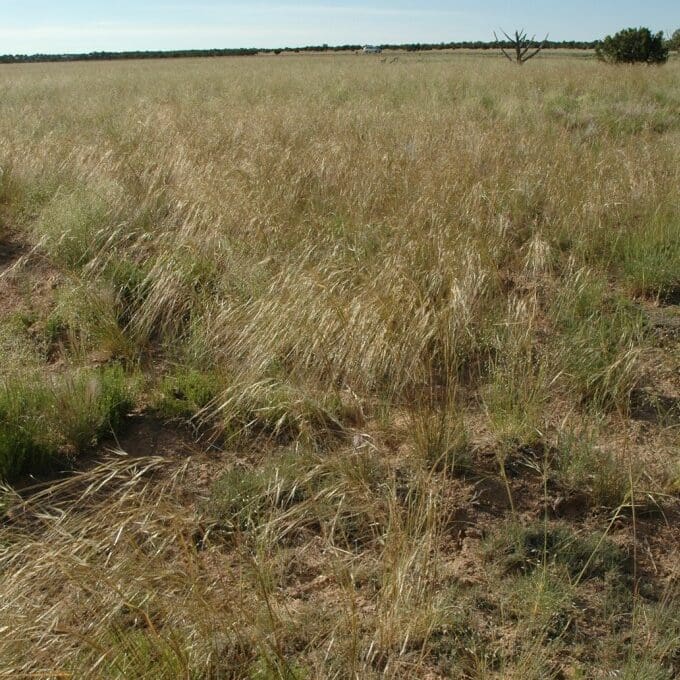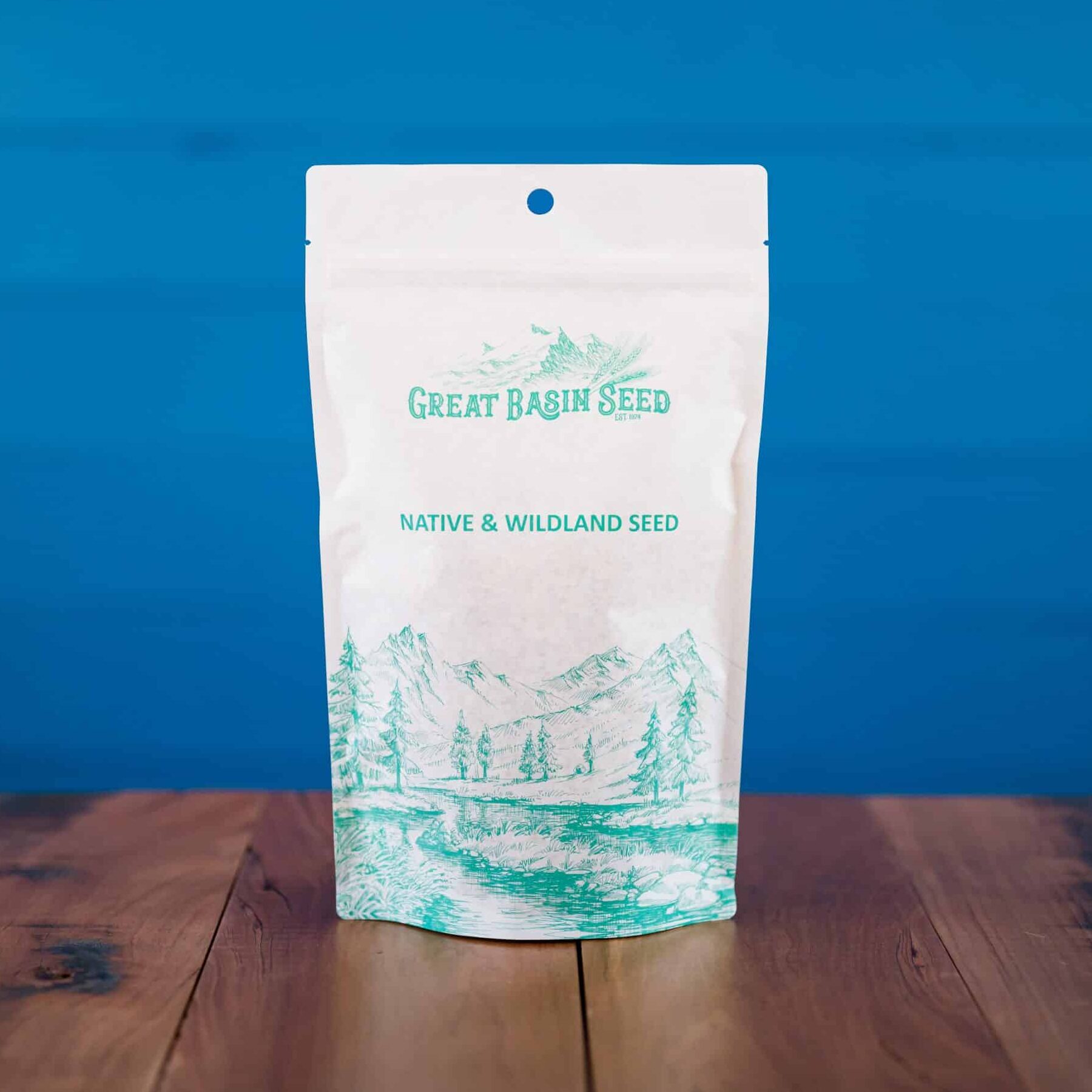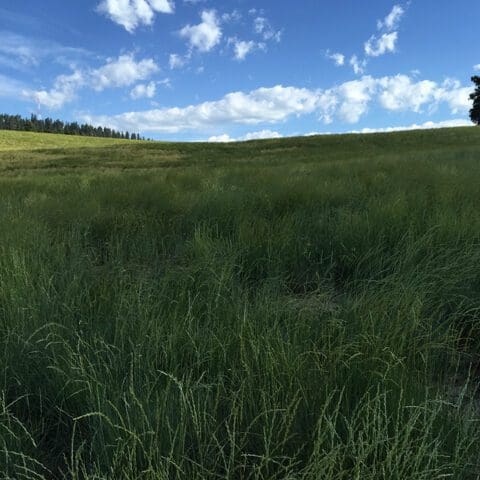Louisiana Sage (Artemisia ludoviciana) is also known as Prarie Sage, Sagewort, Wormwort, White Sagebrush and Mugwort. Herbaceous half-shrub, adapted to a wide variety of soils from 2,500 to 9,000 feet. Behaves as a pioneer species establishing quickly and easily, even on harsh sites. Provides fair forage to livestock and wildlife. Blooms in the fall.
Louisiana Sage (Artemisia ludoviciana) furnishes essential cover for many of the smaller desert animals. Its foliage and flower clusters constitute most of the diet of the sage grouse, and these parts together with the twigs bearing them are the primary source of food for antelope and mule deer. Range cattle also make good use of sagebrush as forage. Other mammals, which browse the foliage and stems, include jackrabbits, black-tailed rabbits, white-tailed rabbits, cottontails, chipmunks, gophers, ground squirrels, and various species of mice, prairie dogs, kangaroo rats, and white-throated wood rats. Elk and mountain sheep also browse on the foliage and twigs.
White sage occurs from east of the Cascade Mountains in Washington and Oregon, in California, north to eastern Canada, south to Texas and northern Mexico, and in Montana, Utah, Colorado, and in the Great Plains states. It grows in riparian areas along both perennial and intermittent streams, in the sagebrush steppe, in both shortgrass and tallgrass prairies, and in semi-disturbed sites. It grows on dry, sandy to rocky soils below 3500 m.
Louisiana Sage enjoys a myriad of common names, each originating from a different region, each having it’s own historical background. Common names include: Silver wormwood, white sagebrush, wild sage, prairie sage, wormwood, white mugwort, western mugwort, Louisiana sage, darkleaf mugwort, Mexican sagewort, Chihuahua sagewort, Garfield tea, lobed cudweed, man sage.
In addition to it’s use as a reclamation and botanical species, Louisiana Sage has a diverse ethnobotanic background, including the following past and present uses: burning for cleansing and purification, spreading along the borders and on the altar in ceremonial lodges, as incense to cleanse and drive away bad spirits, evil influences, bad dreams, bad thoughts, and sickness. The smoke was used to purify people, spaces, implements, utensils, horses, and rifles in various ceremonies. It is used in the Sun Dance and Standing Against Thunder ceremonies. White sage tea has been used for stomach troubles and many other ailments. Its crushed leaves served as snuff for sinus attacks, nosebleeds, and headaches. It has been used as a salve on sores and as an astringent for eczema. It has served as a deodorant and an antiperspirant for underarms and feet. White Sage tea has been used to reduce phlegm and to relieve a variety of lung and stomach complaints, treat tonsillitis and sore throat. The poultice of leaves have been used to heal old sores and to “smoke ponies when they have the distemper”, and an infusion of leaves to heal tonsillitis and sore throats. It has been used to relieve aching feet, for rheumatism or other aches, as a poultice or compress for headaches, to stop diarrhea, in a sweatbath for rheumatism, and to relieve the itching and discomfort of rashes and skin eruptions. Stems have been used as a moxa to relieve headaches or other pain. A smudge of the leaves is said to drive away mosquitoes. The Omaha used the leaves in a tea for bathing and used the powdered leaves to stop nosebleeds. Both the Pawnee and the Bannock women drank Artemisia ludoviciana tea during their moon time, or menstrual periods. The Shoshone took white sage for colds, coughs, headaches, stomachaches, as a compress for fevers, to stop diarrhea, as a physic, as a regulator of menstrual disorders, and for influenza. The Washoe used white sage as a cooling, aromatic wash for headaches, colds, and coughs. Other tribes who used white sage include the Arapaho, Comanche, Gros Ventre, Creek, Navaho, Tewa, and Ute.
The lactone glycosides, santonin and artemisin, are probably found in all Artemisia species and account for their anthelmintic properties. Thujone, a terpene-like ketone and essential oil, is also found in the plant and may be responsible for some of its medicinal effects. However, it is poisonous in large doses. The Food and Drug Administration classifies Artemisia as an unsafe herb containing “a volatile oil which is an active narcotic poison”. Great Basin Seed does not condone or encourage human consumption of Louisiana Sage and the information enclosed if for historical reference only.
***Click on the “Quick Plant Facts” tab above for more information.
Call for Current price and availability. Louisiana Sage is difficult to collect and does not produce seed every year. It is in stock on an intermittent basis.
Louisana (White) Sage NRCS Plant Guide Sheet
Louisana (White) Sage NRCS Plant Guide Sheet
PDF version of NRCS Plant Guide & Fact Sheet
Prepared By: Michelle Stevens Formerly USDA, NRCS, National Plant Data Center
Warren Roberts; Superintendent, Arboretum, University of California, Davis, California
Species Coordinator: M. Kat Anderson USDA, NRCS, National Plant Data Center c/o Department of Environmental Horticulture, University of California, Davis, California
Helpful Links
Additional information about this product can be found on the academic websites linked below.
Synonyms
Many plants have more than one common and scientific name. We've listed a few of them below.
- Louisiana Sage
- Artemisia ludoviciana
- Prarie Sage
- Sagewort
- Wormwort
- White Sagebrush
- Mugwort
Who is Great Basin Seed?
Great Basin Seed is a seed company that specializes in seed sales and consultation for home, ranch, farm, range and reclamation. We have been a leader in the seed industry since 1974.
Our History
We've been in the seed business since 1974.
What We Offer
We offer seed for home, farm, ranch, range and reclamation projects.
Meet the Gang
We have the best employees in the world! We are proud of the work they do, and trust them to serve you!
Right: Company founder Lloyd and his wife Paula Stevens in a wildflower seed production field circa 1977
Quick Plant Facts
| Common Name: | Mugwort, Prarie Sage, Sagewort, White Sagebrush, Wormwort |
|---|---|
| Scientific Name: | |
| Lifespan: | |
| Origin: | |
| Plant Type: | |
| Seeds per Pound: | |
| Root Form | Rhizomatous |
| Min. Precipitation | 10 inches |
| Best Time to Sow: | |
| Max Sowing Depth: | |
| Growth Season: | |
| Sun & Shade Tolerance: | Full sun, Partial shade |
| Elevation of Occurance: | |
| Hardiness Zones: | |
| Select a Package Size and Quantity | 1 oz. Envelope, 4 oz. Pouch (0.25 lbs.), 8 oz. Pouch (0.50 lbs.), 1 lb. Bag (by the pound) |














